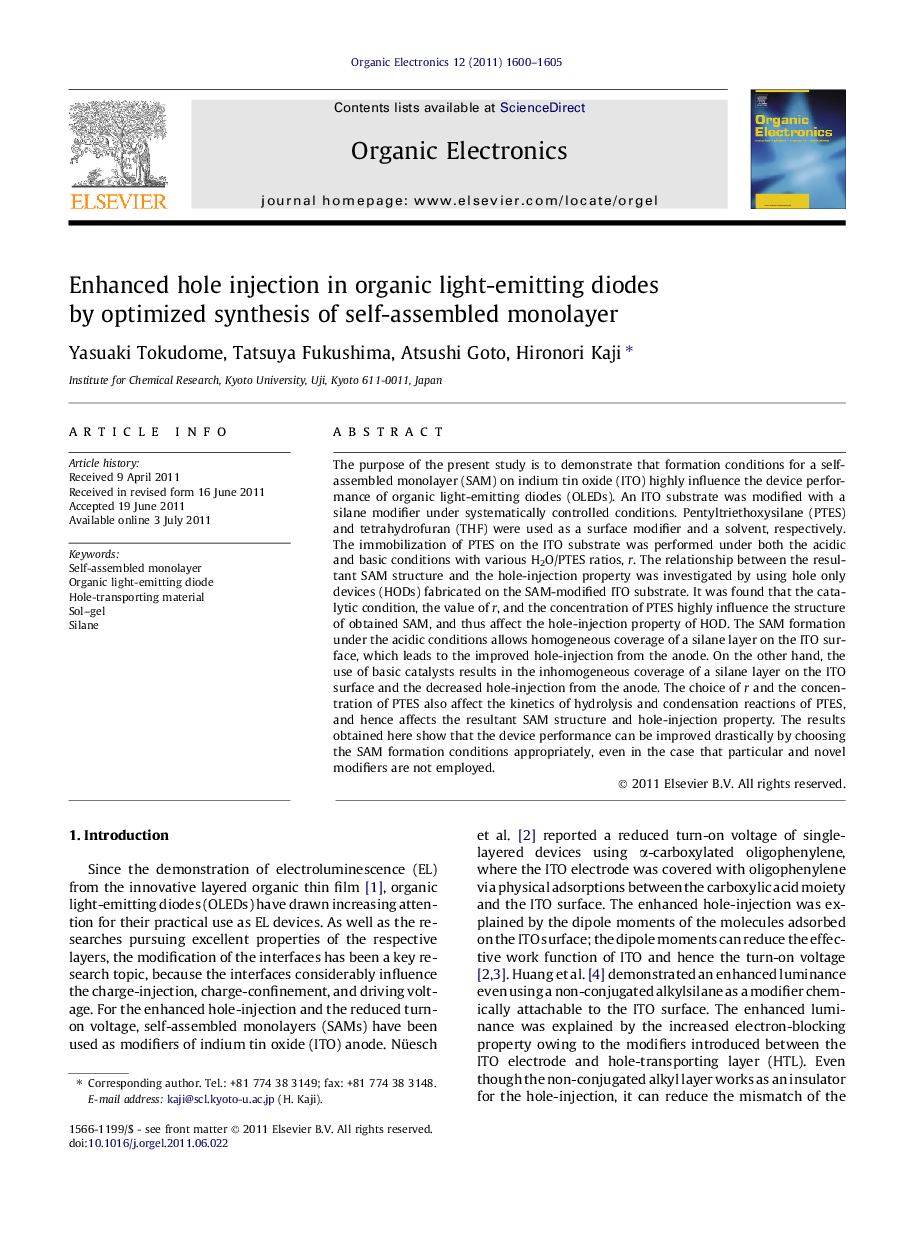| کد مقاله | کد نشریه | سال انتشار | مقاله انگلیسی | نسخه تمام متن |
|---|---|---|---|---|
| 1267598 | 972365 | 2011 | 6 صفحه PDF | دانلود رایگان |

The purpose of the present study is to demonstrate that formation conditions for a self-assembled monolayer (SAM) on indium tin oxide (ITO) highly influence the device performance of organic light-emitting diodes (OLEDs). An ITO substrate was modified with a silane modifier under systematically controlled conditions. Pentyltriethoxysilane (PTES) and tetrahydrofuran (THF) were used as a surface modifier and a solvent, respectively. The immobilization of PTES on the ITO substrate was performed under both the acidic and basic conditions with various H2O/PTES ratios, r. The relationship between the resultant SAM structure and the hole-injection property was investigated by using hole only devices (HODs) fabricated on the SAM-modified ITO substrate. It was found that the catalytic condition, the value of r, and the concentration of PTES highly influence the structure of obtained SAM, and thus affect the hole-injection property of HOD. The SAM formation under the acidic conditions allows homogeneous coverage of a silane layer on the ITO surface, which leads to the improved hole-injection from the anode. On the other hand, the use of basic catalysts results in the inhomogeneous coverage of a silane layer on the ITO surface and the decreased hole-injection from the anode. The choice of r and the concentration of PTES also affect the kinetics of hydrolysis and condensation reactions of PTES, and hence affects the resultant SAM structure and hole-injection property. The results obtained here show that the device performance can be improved drastically by choosing the SAM formation conditions appropriately, even in the case that particular and novel modifiers are not employed.
Optical microscope images of the OLEDs under the applied voltage of 9 V. The SAM layers were formed with (a) acidic (0.01 M HNO3) and (b) basic (0.01 M NH3) conditions.Figure optionsDownload as PowerPoint slideHighlights
► SAM formation condition for enhanced OLED performances was systematically studied.
► Acidic conditions lead to improved hole-injection properties from the anode.
► Concentration of the modifier and content of water also influence the device performances.
► Appropriate choice of SAM formation conditions improved the device performance.
Journal: Organic Electronics - Volume 12, Issue 10, October 2011, Pages 1600–1605